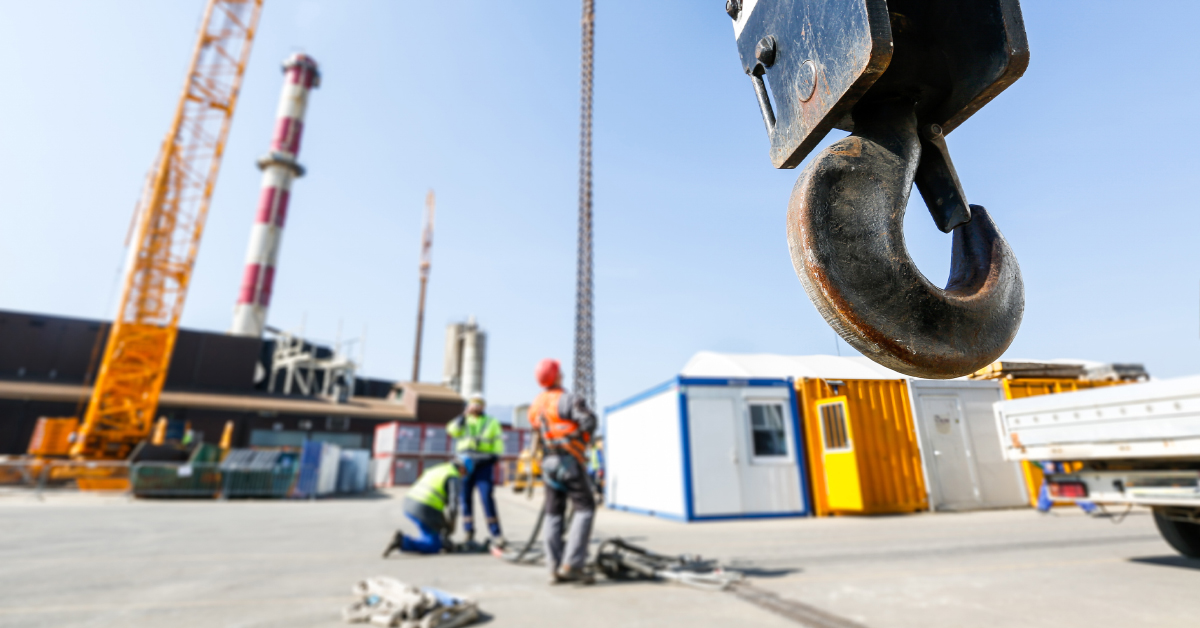
ByMartin Supply •
Communication and Crane Safety
Having a detailed crane safety program in the workplace is important for all employers to follow. All workplace safety is important, but crane safety, in particular, is critical because of how devastating or fatal accidents related to cranes can be. One of the most important ways to prevent crane accidents is to focus on clear communication with the use of a signal person.
What is a Signal Person?
A signal person holds one of the most important jobs in any lifting operation. Acting as the crane operator’s eyes and ears, the signal person’s main responsibility is to communicate with the crane operator at all times. A signal person is required on site when the point of operation is not in full view of the operator, or the crane operator’s view is obstructed in the direction of where the equipment or load is traveling.
What does OSHA say a signal person must know?
OSHA 1926 CFT on Cranes and Derricks in Construction says that crane operator signal persons are considered qualified when they:
- know the types of signals used at the work site
- can competently use those signals
- know the crane equipment, its limitations and all the dynamics involved in crane and boom movement and lifting
- demonstrate their knowledge through oral, written, and practical testing
- are evaluated by a third-party or in-house Qualified Evaluator
The responsibilities of a signal person include:
- Having a clear view of the load and the operator
- Allowing only authorized people in the crane area
- Never directing a load over a person
- Never giving more signals than the operator can perform at one time
- Always giving signals to the operator’s right or left
- Signaling clearly; holding their hands away from their body and accounting for shadows if sunny
- Using a radio if you cannot clearly see the operator and the load
- When using a radio, using a dedicated frequency for communication between crane operators
The crane operator, and not the signal person, has the ultimate responsibility for moving a load safely.
When should a signal person use crane hand signals?
Crane hand signals are the preferred and most commonly used method of communicating with a crane operator. All crane operators should be familiar with an established code of signals, and use a signal person. Signals indicate to the crane operator what load movements are required. A large chart graphically and legibly illustrating and explaining the signals used should be posted before any work begins.
DOWNLOAD A FREE CRANE HAND SIGNAL CHART
The signal person must be in clear view of the crane operator, and have a clear view of the load. If there is any question on the crane operator’s ability to see the signal person or the load, another signal person should be used. The use of a radio is preferred.
Crane Signal Best Practices
Crane operation training provides the complete knowledge of proper use of hand signals for crane operation. But, here are a few tips for the signal person:
- Hand signals are to be continuous during crane operation.
- Always remain in a visible, direct line of sight, with the crane operator. All signals are from the crane operator’s perspective, not the signal person. For example, when the signal person is facing the operator, a motion to move the load using his right arm will see the crane operator moving the load to his left.
- If the signal is not understood, unclear, or cannot be seen by the crane operator they must stop all crane movement.
- On double crane systems, a system of identifying which crane is to be used should be agreed upon before operations commence.
Martin Safety offers a wide variety of workplace and equipment safety trainings to make the workplace a safe space. Contact your Martin Sales Rep or call 800.828.8116.


Comments for this post are closed.